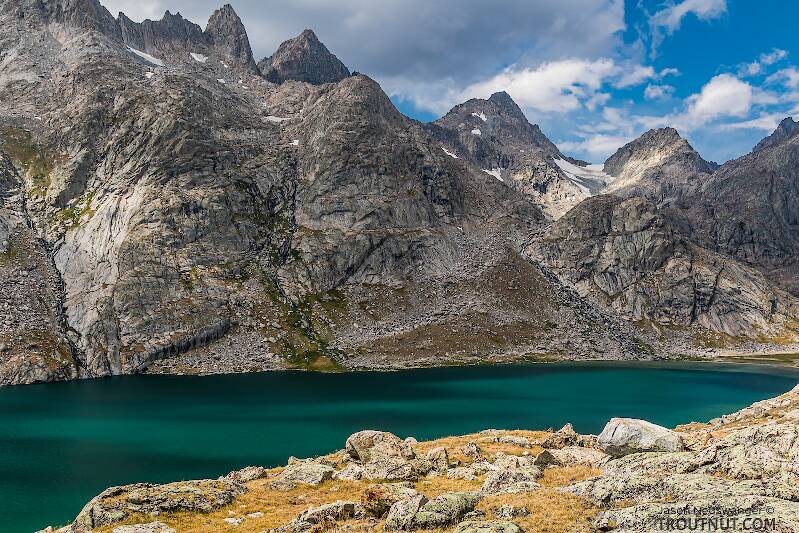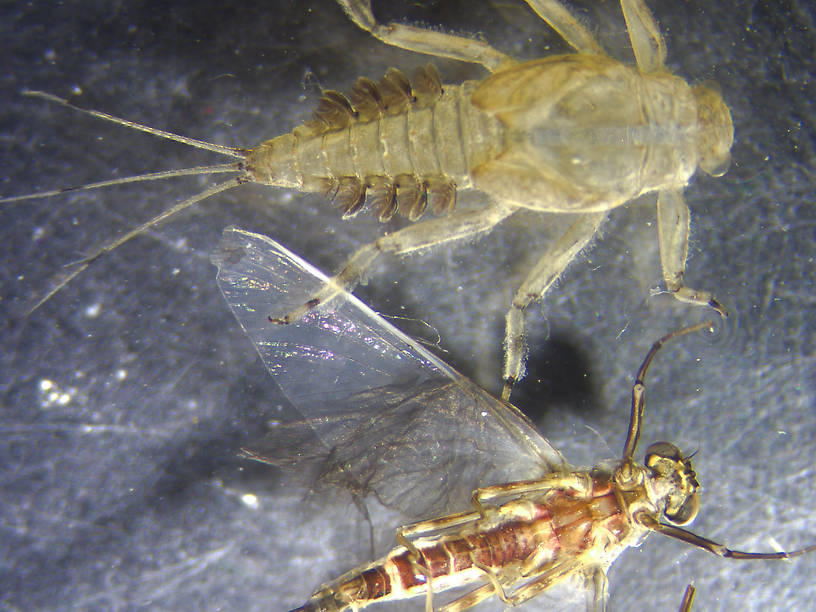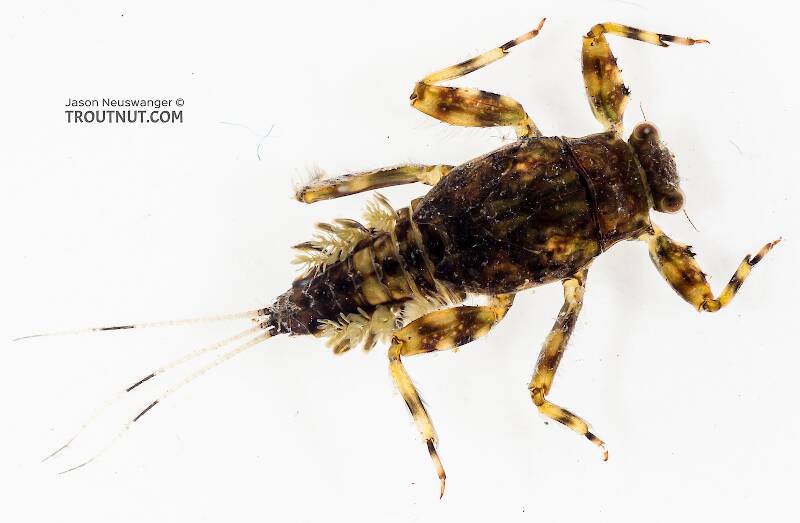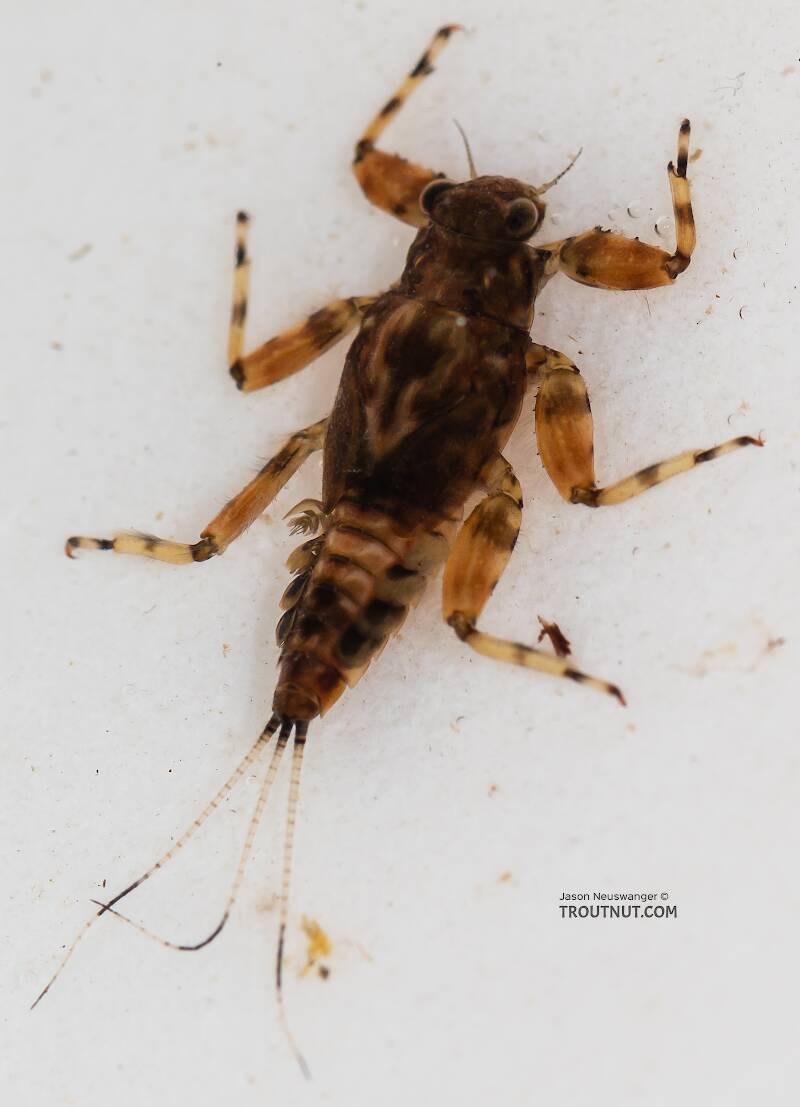
Salmonflies
Pteronarcys californica
The giant Salmonflies of the Western mountains are legendary for their proclivity to elicit consistent dry-fly action and ferocious strikes.
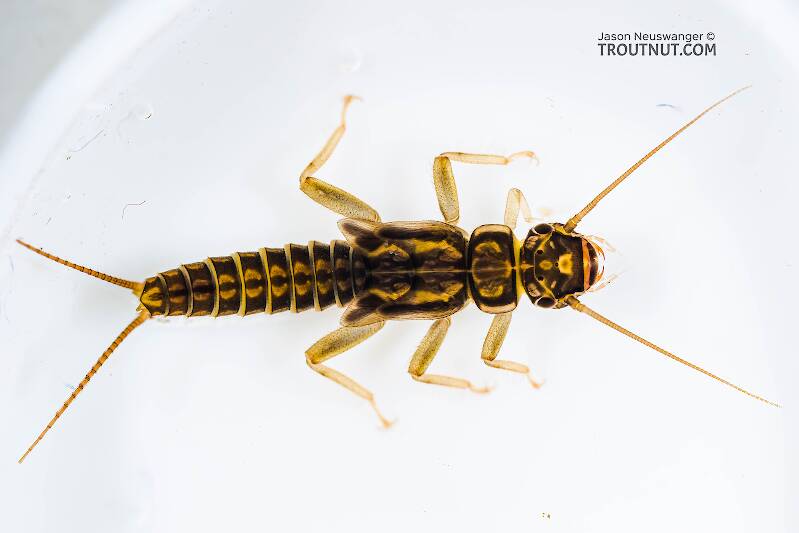

Mayfly Species Drunella flavilinea (Flavs)
Their hatches may be complemented by simultaneous hatches of two less prolific species, Drunella coloradensis and Drunella spinifera.
Where & when
They are reported in places from mid-June all the way through October, but they peak in most places sometime in July or August.In 4 records from GBIF, adults of this species have been collected during June (100%).
Species Range
Hatching behavior
The Flav duns don't have as much difficult getting off the water as their larger brethren, but they still linger longer as duns than most mayflies and provide good dry fly action.
Spinner behavior
Time of day: Late morning, or evening
Habitat: Riffles
Nymph biology
The nymphs occur in many habitats but they're most prolific in fast, rocky water.Identification
To determine whether a specimen of Drunella belongs to Drunella flavilinea, use the Key to Species of Drunella Nymphs.
Physical description
Most physical descriptions on Troutnut are direct or slightly edited quotes from the original scientific sources describing or updating the species, although there may be errors in copying them to this website. Such descriptions aren't always definitive, because species often turn out to be more variable than the original describers observed. In some cases, only a single specimen was described! However, they are useful starting points.
Male Spinner
A species of the fuscata group (now a synonym of Drunella walkeri); very close to E. coloradensis (now a synonym of Drunella coloradensis. The imago is distinguished from the latter species by the pale venation, and rather sharp constriction of the second joint of the forceps, near the apex.
Head and thorax deep ruddy brown. Femur and tibia of fore leg deep blackish brown; tarsi dull whitish. Tibia once and a half as long as the femur, and slightly shorter than the tarsus. Middle and hind legs are dull yellowish; a reddish brown apical patch on each femur on the inner side. Wings hyaline, venation pale. Abdominal tergites deep ruddy brown; sternites more reddish than the dorsal surface. A pale yellowish line along the pleural fold, which tends to extend upward at the edge of each segment, especially on the posterior ones. Tails blackish at the base, paler toward the tips. Second joint of the forceps with a rather sharp constriction near the apex; the tip bent inward (see fig. 153).
Nymph
Nymph without frontal horns or a frontal shelf (see fig. 151 d). Occipital tubercles present, but no thoracic spines. Anterior margin of the fore femur with teeth or spines. Dorsal abdominal spines present on 2-9; very small on 9; somewhat shorter than in coloradensis (now a synonym of Drunella coloradensis). Tibial ‘thumb’ shorter than in coloradensis; fore tibia more slender; middle and hind legs stouter. General color variable, ranging from light to dark brown; pale specimens appear distinctly mottled. Femora with three pale indistinct areas; tibiae with distinct pale bands at each end; tarsi banded in the middle. Tails pale; narrow blackish bands beyond the middle and at the tips.
Specimens of the Mayfly Species Drunella flavilinea
1 Male Dun
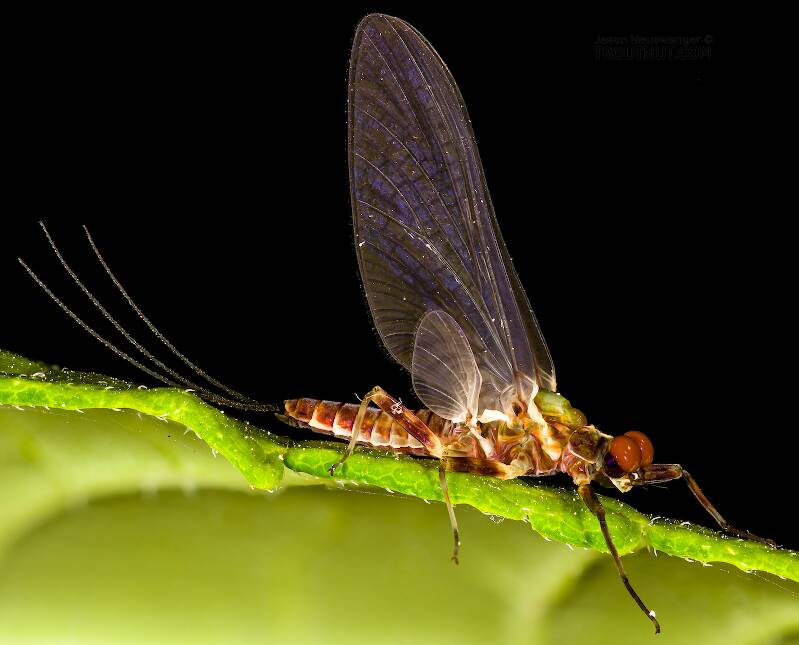
The other possibility I considered for a while based on the dun was Drunella pelosa, which would be the right size, but the other characteristics don't fit.
1 Female Dun
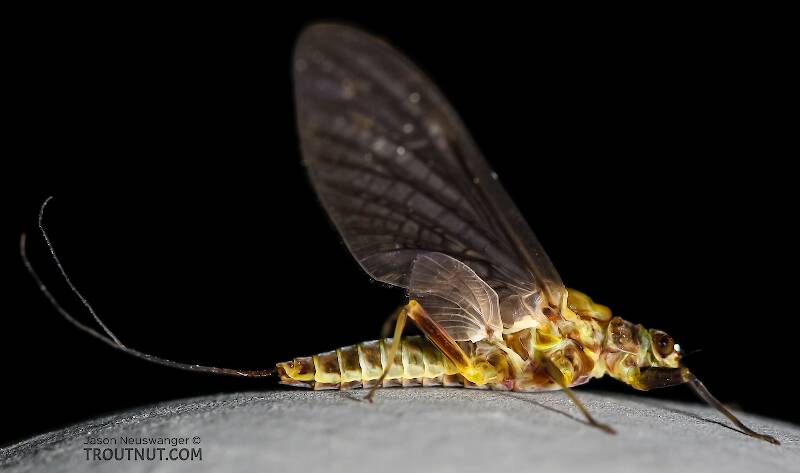
1 Male Spinner
2 Nymphs
Start a Discussion of Drunella flavilinea
References
- Arbona, Fred Jr. 1989. Mayflies, the Angler, and the Trout. Nick Lyons Books.
- Caucci, Al and Nastasi, Bob. 2004. Hatches II. The Lyons Press.
- Knopp, Malcolm and Robert Cormier. 1997. Mayflies: An Angler's Study of Trout Water Ephemeroptera . The Lyons Press.
- Needham, James G., Jay R. Traver, and Yin-Chi Hsu. 1935. The Biology of Mayflies. Comstock Publishing Company, Inc.
- Swisher, Doug and Carl Richards. 2000. Selective Trout. The Lyons Press.
Mayfly Species Drunella flavilinea (Flavs)
Species Range
Common Names
Resources
- NatureServe
- Integrated Taxonomic Information System
- Global Biodiversity Information Facility
- Described by McDunnough (1926)

